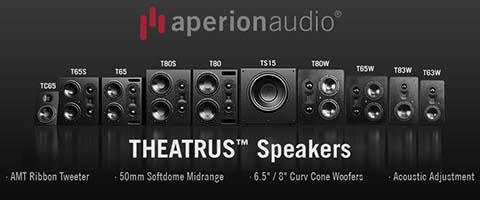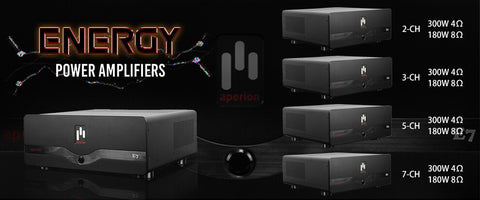Chances are good you’ve heard about Pono Music by now. But just in case you haven’t, or aren’t quite sure what it is, here’s the short version: Pono Music consists of both a hi-rez capable, digital music store and a $399 playback device (the PonoPlayer)  similar to the iTunes/i-devices model. However, any similarities to Apple-branded products end there.
similar to the iTunes/i-devices model. However, any similarities to Apple-branded products end there.
For starters, there’s Pono’s mind-blowing Kickstarter campaign: No one could have predicted just how wildly successful it would end up being. Even though they set a lofty goal of $800,000 as their funding target, Pono completely annihilated that figure, receiving over $6.2 million in pledges–making it the third-highest funded project in Kickstarter history. Not bad for something that’s not even due to ship until October. But all of that early hype will be for naught if Pono doesn’t deliver the musical goods. Here’s the long-version of why it will deliver on that promise, and What You Should Know About Pono Music and the PonoPlayer.
Pono’s All About Hi-Rez Audio
 As mentioned previously, the first thing that sets Pono apart from Apple is the former’s focus on sound quality: Pono music can be mastered, purchased, and played back up to the highest resolution currently possible, 24-bit/192 kHz. That’s around 30 times more data than your average lossy and compressed MP3 file and significantly more than the 16-bit, 48 kHz max resolution iTunes and its accompanying i-devices are capable of.
As mentioned previously, the first thing that sets Pono apart from Apple is the former’s focus on sound quality: Pono music can be mastered, purchased, and played back up to the highest resolution currently possible, 24-bit/192 kHz. That’s around 30 times more data than your average lossy and compressed MP3 file and significantly more than the 16-bit, 48 kHz max resolution iTunes and its accompanying i-devices are capable of.
Lower resolution offerings will be available as well, most likely with a quality-tiered pricing structure. Perhaps the most interesting–and, in my opinion, most refreshing–aspect about Pono’s music store however is what won’t be offered, namely any music files with the acronym “MP3″ attached: The Pono store is for lossless FLAC files only, starting with CD-quality, 16-bit, 44.1 kHz up to the aforementioned 24-bit/192 kHz max.
The Pono Player will however be file agnostic. It will support most file types, including AIFF, WAV, and ALAC, so you can load your existing music into Pono’s 128 GB of total memory (64 GB internal, 64 on a removable SD card; the SD slot will also accept SDXC microSD cards of 128GB or higher). And since getting that bigger memory card is so cheap these days, worrying about the large size of an uncompressed, lossless music file is mostly a thing of the past.
Music Mastered for Quality First
Of course, all that potential resolution would be pointless without some proper hi-rez music to go with it. Thank goodness then Pono founder and rock legend Neil Young is utilizing his industry connections to make sure Pono’s store does music right. It will feature newly minted and remastered music sourced from the highest resolution recordings possible: The analog master tapes. Young’s also mentioned that their goal is to use those masters to create the highest quality HD audio transfers possible, presenting the music exactly as the artists intended. What’s more, there won’t be any needless dynamic limiting, compression or jacked-up loudness for Pono: Their recordings will have all of the natural dynamics, harmonic detail, and tone quality present on the masters. So far, they’ve penned agreements with artists such as Bob Dylan, Sting, The Red Hot Chili Peppers, Jack White, and countless others, according to various sources.
The PonoPlayer is a Better Music Player
Audiophiles already know that when it comes to hearing recorded music at its best, it’s important to make sure the playback gear is up to the task. Since Young is something of an audiophile himself, it’s not surprising that Pono decided to partner with perfectionist audio company Ayre Acoustics to outfit their player with some serious hardware. The PonoPlayer’s triangular, Toblerone-shaped chassis provides enough space for the large storage capacitors, high quality DAC (Digital-to-Analog Converter), and discrete headphone output buffer that are essential to getting audiophile approved sound. While it’s larger than your typical iPod Touch, it’s small enough to be easily portable. But if you also want to hook it up to your home audio rig, by all means do so: The PonoPlayer features a coaxial digital output that bypasses the internal conversion circuitry, sending a pure, unprocessed digital signal to your high-quality outboard DAC.
Given all that’s on offer then, the PonoPlayer should be one of the most complete, lower-priced, portable music players available. They’re even available in sleek, chrome-finished, non-metal, limited edition casings (shown below). The Signature Editions feature laser-engraved artist signatures, including all of the band members for groups. The players come pre-loaded with two, high resolution albums of the artists’ own favorite works. Throw in Neil Young’s marketing muscle, the promise of killer sound, and the music store’s anticipated catalog, and Pono Music could become quite successful: It might very well be the shot in the arm that finally gets the public at large excited about high resolution audio. We’re looking forward to October.
Oliver Amnuayphol is a independent Writer-at-Large with nearly 20 years of audio and home theater industry experience. He currently works as a reviewer for several publications, including The Soundstage! Network and Digital Trends. Find him on Twitter at: (@valvesnvinyl).

Complete Your Sound System Solution

Sign up for our newsletter below, and join our social media groups to stay up to date with the latest news and information from Aperion Audio!
 |
 |








 https://www.aperionaudio.com
https://www.aperionaudio.com
1 comment
I hate digital media. I love to hear progressive rock. My wife says it is to expensive. I really want one. 😂